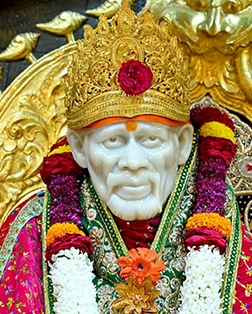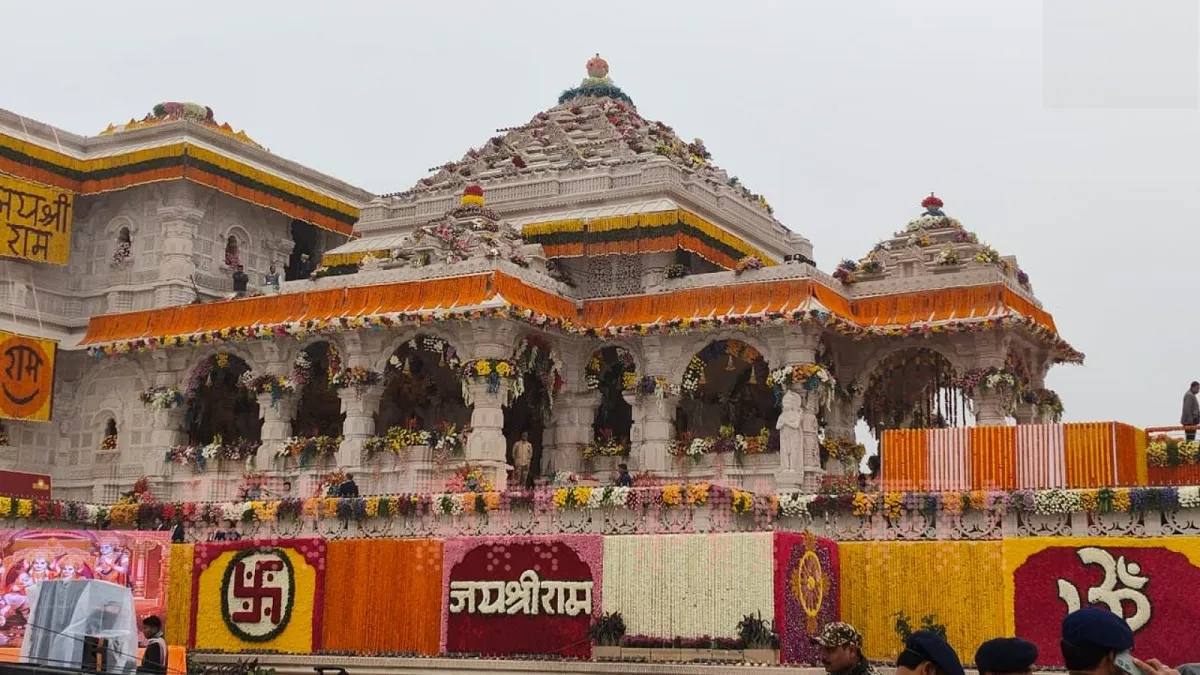Bhakti ki ABCD Song – A Spiritual Alphabet for Kids and Devotees
The Divine ABCD Song: Blending Devotion with Learning
If you’re looking for a unique, culturally rooted, and spiritually enriching ABCD Song, the “Bhakti ki ABCD” is an extraordinary creation that turns simple alphabet learning into a powerful journey of faith. Unlike typical abcd alphabet song versions made for children, this song connects each letter of the alphabet to a divine figure, sacred idea, or powerful symbol of Indian spirituality. It’s a new-age way to teach values and religious roots through melody, rhythm, and meaning.
In a world of fast-paced education and ever-shortening attention spans, this Bhakti ki abcd song stands out. It’s engaging, soul-touching, and rooted in devotion, making it perfect for parents seeking quality content, educators wanting creative tools, or spiritual seekers who want their children to grow with the grace of Indian culture.
Now, let’s walk through each letter from A to Z, and dive deeper into the spiritual treasures hidden in every sound of the abcd song.
A – Annapurna

Annapurna is the respected goddess of nutrition and food. Her name translates to “the giver of food,” and she is believed to feed the universe itself. Her divine kitchen never runs dry. As the first letter in this abcd song with words, Annapurna represents not only abundance but also the gratitude we should feel for every meal.
In Indian culture, kitchens are sacred spaces, and food is not merely sustenance—it’s a form of prasad, divine blessing. When children begin their ABCD Song with Annapurna, they begin with respect for nourishment, for sharing, and for grace. This is why many homes place her image near the kitchen or dining space—to keep her blessings flowing. From the very first letter, this devotional abc alphabet song creates a foundation of humility and thanksgiving.
B – Brahma Ji

Brahma Ji is the creator of the universe in Hindu mythology. With his four faces, he symbolizes the all-seeing, all-knowing nature of divine wisdom. Every direction, every thought, and every dimension is under his watchful gaze. Placing Brahma Ji under the letter “B” in the bhakti ki abcd gives kids a glimpse into the idea of creation and beginnings.
Brahma Ji teaches us that every new thought, every invention, and every life starts with creation. His presence in abcd song is vital, as it encourages the value of knowledge, observation, and starting fresh. For children, learning that the universe began with a divine thought opens their imagination—and this is exactly what this abcd song encourages.
C – Chandradev

Chandradev, the moon god, brings peace, calm, and a reflective mind. Just as the moon softly illuminates the night sky, Chandradev represents emotional balance and beauty. The moon’s cycles are connected to nature, time, and our internal rhythms—making this deity essential in many Vedic practices.
In the abcd alphabet song, the inclusion of Chandradev under “C” not only connects kids to celestial mythology but teaches them that stillness and introspection are equally divine. Moonlight has always been linked with spiritual practices like meditation, making Chandradev a symbol of mental clarity and purity. This makes the song both poetic and peaceful, an ABCD Song like no other.
D – Durga Maa

Durga Maa is a powerhouse of divine feminine energy. She rides a lion, holds weapons in her many arms, and destroys evil with fearless grace. More than just a warrior goddess, Durga is also a mother—a protector who nurtures as fiercely as she fights.
When children sing D is for Durga Maa in the Bhakti Ki ABCD song, they aren’t just learning a letter—they’re learning about courage, protection, and the power of standing up for what’s right. Her story from the Devi Mahatmyam has inspired generations, and her presence in this abcd song video teaches that femininity is never weakness—it’s strength, wisdom, and compassion combined.
This devotional ABCD instills both boys and girls with respect for women and the powerful role they play in family, society, and spirituality.
E – Ekadanta

Ekadanta, meaning “the one with a single tusk”, is a name of Lord Ganesha. His broken tusk is a symbol of sacrifice, intellect, and the ability to overcome obstacles. When he broke it off to write the Mahabharata as Sage Vyasa dictated, he showed that success requires focus, determination, and sometimes letting go.
In the Bhakti ki ABCD Song, E for Ekadanta introduces young learners to the story of Lord Ganesha in a unique and meaningful way. It’s not just about learning the letter E, but about understanding that every beginning—be it a school year, a prayer, or even learning ABCDs—should be started with the blessings of Ganesha. This makes the song ideal for children and perfect for teaching deep spiritual lessons in a simple, joyful way.
F – Falgun

Falgun is the name of the spring month in the Hindu lunar calendar, often associated with color, festivity, and the awakening of life. It is during Falgun that Holi—the festival of colors—is celebrated. This month stands for renewal, joy, and the playful energy of nature. It’s a reminder that life is cyclical and always blooming with new chances.
In the Bhakti ki ABCD song, the inclusion of F for Falgun breaks the pattern of only focusing on deities and introduces a cultural and seasonal element. It teaches children the value of celebration, community, and togetherness. Through it, kids learn that divine beauty also lives in nature, joy, and change.
G – Ganga Maa

Ganga Maa is not just a river—she is a goddess flowing from the heavens to the Earth. Revered for her purity and power to cleanse sins, Ganga holds a sacred place in Hindu belief. People bathe in her waters seeking spiritual purification and peace. Temples line her banks, and legends tell of her descent to Earth to wash away human suffering.
In this abcd song, G for Ganga Maa adds a deeply spiritual and environmental layer. Kids learn early to respect water, nature, and the flow of life. Her presence in the ABCD Song also introduces geography, culture, and mythology all at once—showing children that the natural world is filled with sacred meaning.
H – Hanuman

Hanuman, the mighty devotee of Lord Rama, stands for strength, loyalty, and boundless energy. Known for lifting mountains, flying across oceans, and conquering demons, he’s the embodiment of courage powered by love. Kids worship him for his monkey-like appeal, while adults respect him for his spiritual depth and courageous dedication.
H is for Hanuman teaches children in the Bhakti ki ABCD song that true strength comes from faith, not just muscles. He didn’t serve Lord Rama for rewards—he served out of pure love. That’s why he’s known as the symbol of bhakti.
This makes the song a spiritual training ground—where alphabets turn into affirmations of inner power and divine connection.
I – Indra

Indra, the king of the gods, controls the elements—especially rain, thunder, and the sky. His lightning bolt (vajra) is his weapon, and he rides a majestic white elephant named Airavata. As ruler of the heavens, Indra reminds us that divine authority governs nature’s balance.
Placing Indra under “I” in the ABCD Song brings an element of awe and leadership into the learning process. For children, this shows that with great power comes the responsibility to protect, nurture, and maintain order. It’s also a subtle introduction to natural sciences—clouds, rain, thunder—all explained through divine narrative.
J – Jagannath

Jagannath, a form of Lord Krishna, is the presiding deity of the famous temple in Puri, Odisha. His round, wide-open eyes and big smile welcome everyone—regardless of caste, color, or class. The Jagannath Rath Yatra is one of the biggest spiritual events in India, where devotees pull his grand chariot through the streets with joyous chants.
By placing J for Jagannath in the Bhakti ki ABCD song, the concept of universal love and inclusivity is naturally introduced. Kids learn that God doesn’t judge appearance or status—He sees only the heart. Jagannath’s iconic image in the abcd song video helps form a loving connection to divine playfulness and acceptance.
This is crucial for a generation growing up in a diverse world—it teaches equality through a devotional lens.
K – Krishna

Krishna, the flute-playing, wisdom-sharing, butter-stealing god, is one of the most beloved figures in Hindu mythology. From his childhood adventures in Vrindavan to his philosophical teachings in the Bhagavad Gita, Krishna is the perfect blend of charm and intellect.
K is for Krishna in this abcd song brings both playfulness and wisdom into focus. Kids resonate with his mischief—stealing butter and playing with friends—while also being exposed to his deeper messages on life, duty, and love. Krishna teaches that spirituality isn’t boring or distant—it’s joyful, musical, and full of meaning.
L – Lakshmi

L is for Lakshmi, the radiant goddess of wealth, prosperity, and spiritual abundance. In ABCD Song, when kids sing “L for Lakshmi,” they’re invited to understand that true wealth isn’t just coins—it’s kindness, contentment, and moral richness. The Bhakti ki ABCD framework deftly uses Lakshmi’s imagery—gold coins, lotus petals, and glowing smiles—to teach that material comfort is blessed when balanced with spiritual values. In the abcd alphabet song, Lakshmi reminds young hearts that generosity and grace go hand in hand with everyday prosperity.
M – Mahadev

M is for Mahadev—Lord Shiva—embodying transformation, introspection, and cosmic power. Within the abcd song, introducing Mahadev at this point adds depth: from nurturing goddesses and cultural festivals to the silent force of destruction and rebirth. As part of the Bhakti ki ABCD song, Mahadev teaches children that stillness, reflection, and discipline are essential for spiritual growth.
N – Narayana

N honors Narayana, the preserver of the universe—Lord Vishnu’s eternal form. The ABCD Song includes this figure to illustrate that order, love, and dharma keep the cosmos in harmony. In educational terms, Narayana imparts the concept of sustaining values, kindness, and ethical living through daily choices. Placed within the abcd song, Narayana reinforces the message that devotion is about consistency—like a melody that continues long after the instrument stops.
O – Omkar

O resonates with Omkar—the primordial sound “Om,” symbolizing the vibration of creation and the ultimate reality. The abcd song visually ties Omkar to meditative imagery, like cosmic ripples and rhythmic chanting. Introducing O for Omkar in the Bhakti ki ABCD song connects children early to Sanskrit mantras, breath awareness, and the idea that sound can still the mind. This entry makes your abcd song meaningful, bridging playful letter-learning with sound-based spiritual practice.
P – Parvati

P honors Parvati, the compassionate and powerful consort of Shiva. In the abcd alphabet song, Parvati is presented as the gentle counterbalance to Mahadev, teaching children that strength can be tender, and devotion can coexist with power. The point in the Bhakti ki ABCD journey where P appears after O underscores divine harmony: the masculine and feminine energies working together. In the abcd lyrics, Parvati’s essence reminds young minds that balance, empathy, and partnership are sacred.
Q – Questions of Arjun

Q takes a creative turn with Questions of Arjun, referencing the dialogue in the Bhagavad Gita. Using Q for a question rather than a name makes this abcd alphabet song unexpectedly deep and philosophical. It encourages kids to ask about life, purpose, and duty—just like Arjun did when guided by Krishna. Embedding this insight in abcd version sparks curiosity, critical thinking, and early engagement with spiritual texts—all through the lens of an alphabet tune.
R – Radha Rani

R celebrates Radha Rani, the epitome of divine love and devotion. In the ABCD Song, “R for Radha” teaches that devotion transcends reason—it is a full-hearted offering. Children learn that while knowledge helps us understand, Radha’s example shows us how to love and surrender with purity. In the Bhakti ki ABCD song, Radha becomes a living symbol of emotional wisdom, and the abcd song connects it to stories and melodies that touch the heart.
S – Saraswati

S stands for Saraswati, the goddess of knowledge, learning, and arts. In the abcd alphabet song, introducing Saraswati at this stage reinforces the progression: after letters tied to emotion (Radha) and inquiry (Arjun), the child reaches learning and expression. Singing “S for Saraswati” in the Bhakti ki ABCD encourages children to value school, art, and creativity as sacred endeavors, all of which align beautifully with modern bacchon ki abcd educational goals.
T – Tulsi Ji

T honors Tulsi Ji, the sacred basil plant revered in spiritual households. Tulsi symbolises purity, protection, and divine presence in daily life. In abcd song, “T for Tulsi” subtly teaches kids about plant care, environmental respect, and habitual devotion—watering a plant daily becomes part of their routine, much like daily prayer or study.
U – Umapati

U acknowledges Umapati, another name of Shiva as the beloved of Uma (Parvati). This letter returns to divine union—Umapati symbolises interconnectedness: masculine and feminine, action and stillness, strength and compassion. In the Bhakti ki ABCD song, U enriches the spiritual alphabet by reiterating that the divine exists in relational balance, not separation.
V – Vishnu

V echoes Vishnu, the preserver of dharma, reincarnating through avatars like Rama and Krishna. Including V for Vishnu strengthens the theme of advocacy for righteousness. The ABCD Song uses Vishnu’s avatars to teach kids ethics, heroism, and the idea that when societal values falter, courage and integrity will restore them.
W – Worshipping

W is for Worshipping, tying every previous symbol into a singular act of devotion. In the Bhakti ki ABCD song, this letter invites children to take all they’ve learned—about gods, nature, love, wisdom—and turn it into meaningful practice. Whether through prayer, music, or silence, Worship makes the abcd alphabet song a living tradition: letters aren’t just concepts, but bridges to the divine.
X – Xtra Peace

X brings a creative flourish: Xtra Peace. This modern twist in the abcd song communicates to today’s families that peace is not accidental—it takes extra intention. By encouraging kids to breathe, calm their minds, and practice kindness, the ABCD Song becomes a soothing ritual in a busy world. The phrase “extra peace” resonates in households, echoing a message for mindfulness and presence.
Y – Yamuna

Y flows with Yamuna, the sacred river associated with Krishna’s childhood plays. With “Y for Yamuna” in the Bhakti ki ABCD sequence, teaches the sacredness of water, childhood joy, and mythic geography. Yamuna introduces kids to puppet lore, river ecology, and Krishna’s mischief—tying devotional learning to geography and environment in a heartwarming way.
Z – Zor Se Bolo “Jai Mata Di”

Finally, Z invites everyone to shout with energy: “Zor Se Bolo, Jai Mata Di!” This rousing finale is a perfect close to your ABCD Song—a powerful, joyous invitation to express devotion loudly, proudly, and collectively. In an abcd context, it ends the song with a cheer that’s fun, inclusive, and spiritually uplifting. The shout-out teaches gamified participation and shows that devotion can be celebratory and communal.
Conclusion:
Bhakti ki ABCD – A Holistic Devotional Alphabet From A to Z, this Bhakti ki ABCD ABCD Song is not just about alphabet learning—it’s an immersive spiritual curriculum. With each letter tied to a divine name, nature, virtue, or practice, the abcd alphabet song becomes a path of reflection, emotion, and cultural richness. It caters to the demands of bacchon ki abcd learning while preserving depth and devotional integrity.

















